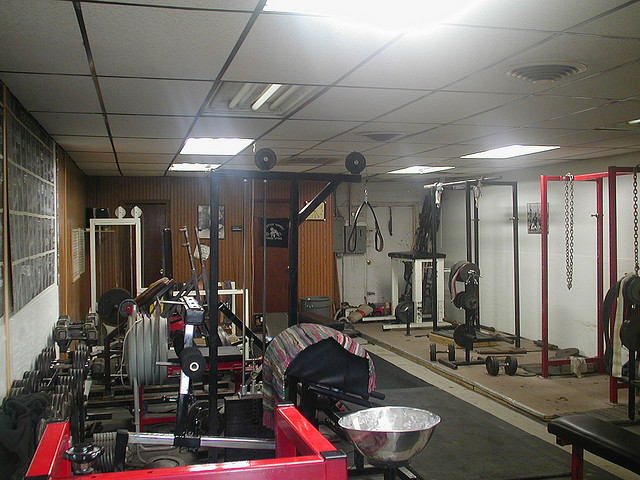
I have posted this before but we just filmed over an hour of footage where I speak about all the misconceptions of Westside Barbell (the gym) and Westside Barbell (the training) during the years I was there (1990-2005). This list will be a good reference as we post these table talk videos.
For reference: in 1990...
- Milli Vanilli was busted for lip syncing
- Home Alone, Ghost, Pretty Women, and Total Recall were popular movies.
- Friends, The X-Files, and The Fresh Price were among the most popular TV shows.
- I was using a beeper for work.
Westside over the Years: 1992–2005
“Dave I hear a lot about the old style of Westside training. Can you explain what differences there are compared to today’s style of Westside?”
I can’t tell you what’s going on at Westside today. There are only a very small handful of people who can do that, and those people train at Westside Barbell.
What I can tell you is what I saw during the time I was there from 1990-2005. To list every change I remember in detail would take a book. However, I can list a bunch of stuff as I remember it, let it go as is, and see what happens.
In short and in no specific order, here are some of the changes that I saw:
Bands were added.
Chains were added.
Weight releasers were added.
Board presses were added.
Floor presses were added.
Dynamic Effort (DE) cycles went from five weeks to three weeks.
Max Effort (ME) work cycled from three weeks to one week.
An assload of new special exercises were added.
The reverse hyper and glute ham raise became huge (from one day per week to 5–6x per week in some cases).
GPP was added.
Trap bars, dips, and overhead work were canned.
Kettlebells were added.
Stability balls were added.
Mantarays came and went.
Cambered bars were added.
DE work with safety bars was added.
Lactic acid tolerance training was added.
The lightened method was added.
We moved gyms three times.
The belt squat became a machine instead of a huge box with a hole in it.
The sled mill was added.
If you didn't work hard you would be tossed out.
Sometime after 2000, we started to implement powerlifting gear into the training.
Powerlifting gear improved.
I remember the GREAT day when the monolift was added—no more taking the weight out of the racks at Louie’s height.
Circa maximal phases were added.
Recovery became more important.
Restoration sessions were added.
Extra workouts were added for weak points.
We became better at figuring out how to overcome sticking points.
The 45-degree back raise was added.
The back attack was added.
Members came and members went.
It was always required that you help at meets.
Suspended ME work was added (concentric only).
Teaching became a big part of the process. At one time, we had four guys writing articles and three doing seminars.
Single leg work came and went.
Standing ab work became vital.
Louie came out of retirement.
The record board began to change at every meet.
The club “top” list got very freaky and keeps growing today.
We tore through 4–5 stereos.
Fat bars were added.
Percentages for Dynamic Work were lowered.
If you were late to training you could be kicked out.
Grip work became more important.
Timed work was added for recovery.
Max effort waves that built on each other were added.
We were tough on which max effort movements tested strength and which ones built strength.
Weak point analysis was based on technical performance more so than structure.
Heavy ankle weights were added for GPP work.
Weight vests were added for GPP work and sled dragging.
Wheelbarrow work was added for GPP work.
Speed training rest periods were slightly increased as band tension got heavier.
Band tension was taken to extremes and then lowered somewhat to fit each lifter.
Lat work for many of us dropped in daily volume but was done four days per week. For me, I had two row days and two pull-down days.
Speed pulls were added after speed squats.
Speed squat cycles changed and advanced with each meet based on the results that the last group had.
Technique remained the most important variable.
The new guys never made the same mistakes that we did, but they made their own. This is the progression of success.
The roller hyper was added to the mix. This gave us a different way to do hypers and added variety and sessions per week.
The plyo swing was added, offering a way to build greater explosive strength.
Decline max effort work came and went, and then came back again.
Belts squats were used more to unload the spine.
Your feelings didn't matter - Your total did.
The tendo unit was added. However, it told us what we already knew so it was only used sparingly for testing. Having the device on made many lifters too concerned with what the machine read and distracted them from actually doing the lift. I was one of them.
We were taught that we were only as strong as our weakest guy, and it was our job to make him better. The exact words used were more like “stop bitching about how weak he is and make him stronger. He’s weak because you suck as a training partner.”
Strapped up good mornings were a disaster.
Although weight releasers were used sparely, they gave very good results when used correctly.
As the gym became more popular, the door was always open for coaches and lifters. The entire time I was there, I met close to 100 coaches and only saw three of them train or even try a movement. I met with even more lifters and never saw any of them train.
Louie pissed me off well over twice a week and if I did my job, I pissed him off more times per week than that.
Louie would tell me the same damn thing 101 times and would finally stop when I did it on the 101st time. It was really what I needed to do in the first place, but I was too ego-driven to do what I sucked at. Some coaches think they have a hard job. Try walking into Westside and teaching those guys what to do! There’s only one way it will get done and that’s by earning their respect “under the bar.”
After 10 years, I finally got through one session without hearing AC/DC.
Ultra high reps were added for recovery—reverse band presses for 100 reps.
Timed good mornings (five minutes) were added for a short time. THESE REALLY SUCKED.
Timed dumbbell presses lasted longer.
Just because they’re in the videos, doesn’t mean we did rolling dumbbell triceps extensions for eight sets of eight (20 seconds rest) twice a week every week of the year.
Doing 100 rep band push-downs with the light (purple) bands for extra workouts twice a week makes a huge difference for many lifters.
Floor presses with chains were added.
The chain bench press was added (work up to 50% and add one chain per set until you max out).
The front squat harness broke and was never replaced. Squats and pulls still went up, and our balls were saved.
We discovered that you have a better chance of getting injured with triples and fives than with singles.
Dynamic squat (speed squat) training evolved to include other bars outside of the straight bar. These included cambered squat bars and safety squat bars.
Dynamic bench work also evolved to include cycles of speed work on the floor, off low pins, and off boards.
Bungee cords didn’t work as well as bands.
The gear got better (bench shirts and squat suits) so training had to change. The strength work didn’t change though because the program was designed around getting stronger in and out of gear. However, the new gear added a new skill aspect to the sport. We added in some sessions just to get used to wearing the gear, but this didn’t happen more than 4–5 times for each meet (at the most). This may have changed since I left the gym, but I doubt it.
More warm-up sets were added for each lift. You didn’t work up until you were ready.
More control on ME work was added. By this, I mean that smarter decisions were made. In the past, we just said screw it and loaded the bar whether or not it was a good day or a bad day. This is one thing that I feel has helped the newer guys stay healthier than we were in the past.
Toward the last few years, if we felt beat up, we rested and just did supplemental work. This goes along with the previous point.
Most speed pulls advanced into speed pulls with one or two double mini bands.
In the beginning, all ME work for the lower body was done raw, and we used to bust the balls of anyone who tried to use gear—even a belt. In time, the belt and briefs were used, and we were healthier because of it.
Most people who think that they can last there never will, and those who think they don’t belong will become one of the best. This will never change.
All of us used to do the same max effort work regardless of what we wanted to do. When the gym moved, we did those things that we needed to do and not so much what everyone else was doing.
Supplemental work became extremely important as time went on as we all began to see what Louie had been telling us for years. As I like to say in seminars, “You can either train a lift or build a lift. The choice is yours.” Supplemental work builds lifts.
Hamstring work is HUGE, but we never did RDL’s or stiff legs deadlifts. Hams were built using glute ham raises, pull-thrus, banded leg curls, squats, and pulls.
Supplemental work was waved based on individual needs. At first, we just did what we did. In time, we stayed with one movement until it stalled and then moved on. In many cases, we knew what we needed to do, but we weren’t conditioned to do that movement yet. We would have to use “other” movements to build up to the movement we really needed to do to build the lift. For example, if I needed to do hanging leg raises so that my toes touched the bar then I had a problem if I couldn’t do one. I would have to start with other stuff such as pillars, knee up leg raises, and eccentric full leg raises, and work up to full hanging leg raises. We used and created many supplemental progressions like this. The same concept was also applied to many of the max effort movements but differently. In this case, we would take what we were doing and what was working and find ways to progressively make it more taxing and difficult.
From day one, every movement had a reason or it wasn’t done.
As benches got bigger, upper back work got more important. In many cases, it was done four times per week (dumbbell cleans, face pulls, and seated high rows).
What I call “coaches” were created at a faster rate. When I first got to Westside, it took time to learn what was going on (how the training worked and what technical flaws to look for). Louie would point things out to us over and over again until we began to think and notice new things on our own. We had a group of guys that trained together for a very long time, took it all in, and worked very hard to help each other get better. Many weak points were addressed and overcome. When new people were brought in, we quickly showed them what to look for in us so they could help us get better. In other words, as Louie has always said, “We knew what Westside could do for them, but what would they do for Westside?”
The learning curve got shorter as we became better teachers. Now when I speak to Louie, I see that this curve is getting even shorter (and quicker). What used to take a few years to do in both teaching and under the bar is now being done within months.
When I first got there, most (but not all) exercises were standard. They became more specialized as needs changed.
If you were not helping others you would get kicked out.
I’m very fortunate to have come to Westside when I did. Louie had already suffered through so many injuries and mistakes. By the time I got there, he had a hell of a lot figured out and had had two decades of champions to back it up. I came in at a time where experimentation and learning were at an all-time high (at least this is what I think—Louie was doing it for years before I got there). He was getting the guys who were willing to try more new stuff to get better. At the time, Louie wasn’t training very hard, and I would venture to say that he was retired. Then one day something was said to him—“Old man, you will never have 800 pounds on your back again.” That day was a huge turning point for Louie’s training as well as for the gym. In time, Louie starting kicking all our asses in the gym (this is seen in many of the videos) and made a huge comeback. This gave him instant respect with us. Before we had listened to what he said or did what he told us to do, but now we actually SAW what he had been telling us.
Everyone who stayed and could last at least one year put over 100 pounds on their total.
It’s a whole other ball game when you actually SEE what Louie says works and all of a sudden you believe it will also work for you.
With each move, the bathroom got better.
The last place had a garage door making it easier to get more equipment in.
It’s important to note that the training was and always is evolving. New things were added and tried. Some stuff worked and some didn’t. The old stuff was working for us the same way that it would work for you today, but things only work for so long and you have to find new ways to advance. In many cases, the old things are what advanced us to the new ones. They are what prepared us for the new stuff.
If you felt you were more important than the gym you would be kicked out.
Before Westside, I was lucky to make 4–5 changes to my training in a year. I used the western method of periodization and progressive overload. I changed what I could, but there were no checks and balances to work with as there were with Westside training. I didn’t have max effort work to gauge my progress or videos to show me how my bar speed was looking. My focuses were simply on making everything stronger and bringing up my weak points. Training is more complicated than many make it out to be, but it’s still simpler than most think. The key is to understand the methods and use them to the best of your ability.









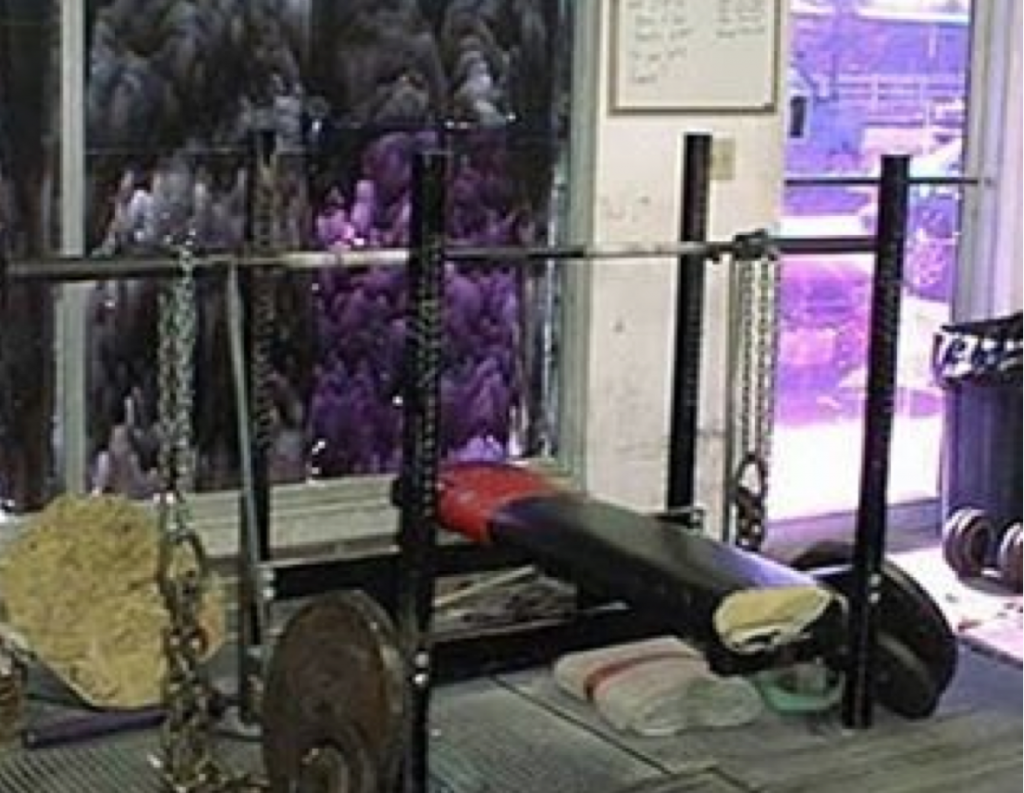
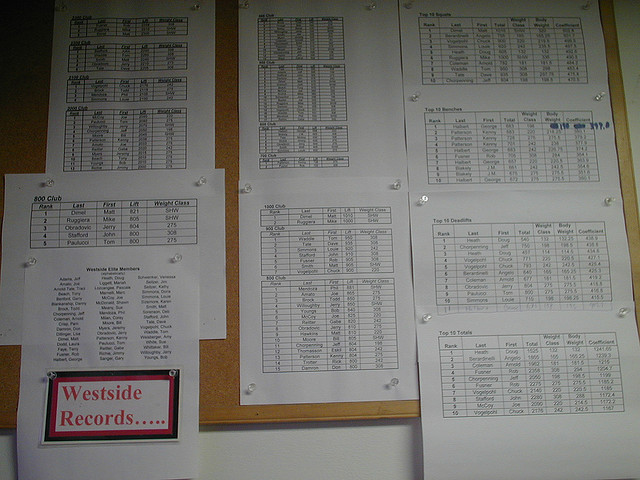
![Iron House - JL, Jim, Bob[1]](https://www.elitefts.com/wp/wp-content/uploads/2010/09/Iron-House-JL-Jim-Bob11.jpg)
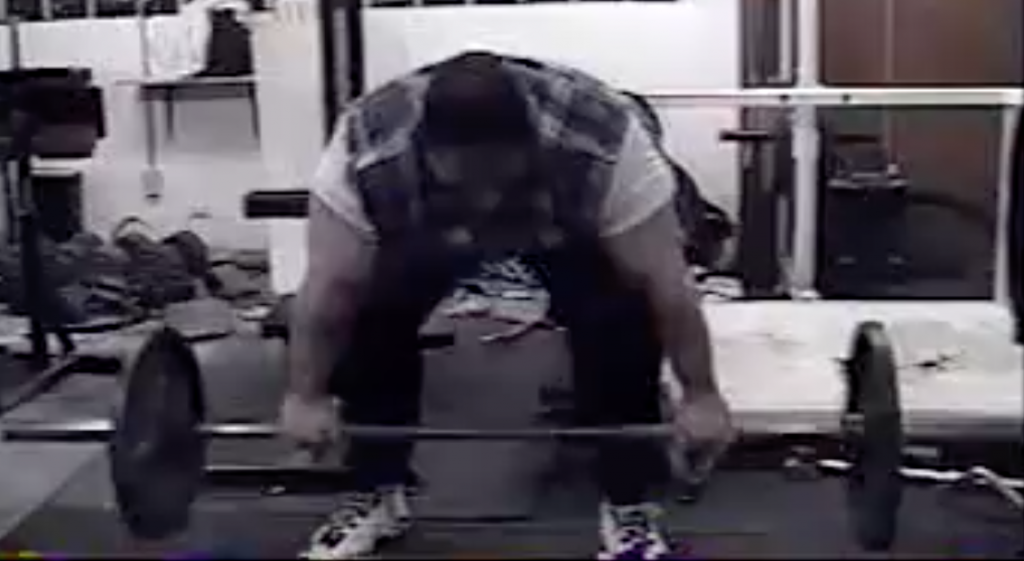
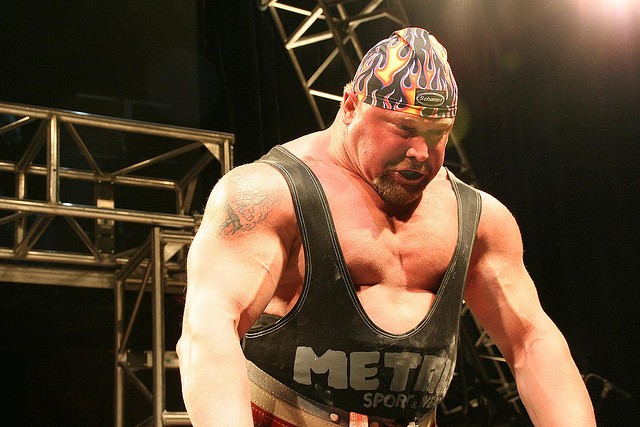
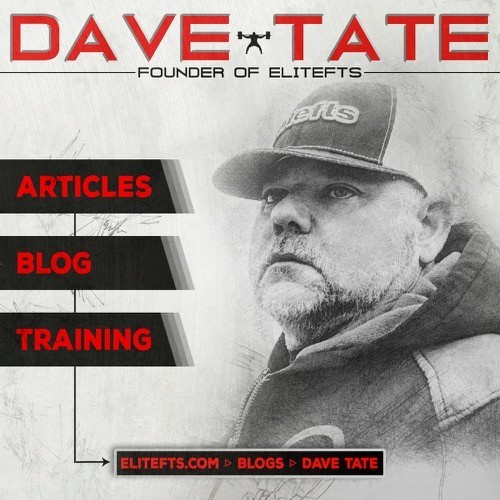
What is the difference between the top list and the record board?
Thanks again!
The top lists were things such as those who have totaled elite (There were over 50 on that list before I got there and I was the first to be "recruited" to the gym. I was also not allowed on this list. or any other, until I achieved the status or lift in another weight class), 1000 pound, 900-pound and 800-pound squat club, Bench, Deadlift and Total Clubs.
Love this part.
"We were taught that we were only as strong as our weakest guy, and it was our job to make him better. The exact words used were more like “stop bitching about how weak he is and make him stronger. He’s weak because you suck as a training partner.”